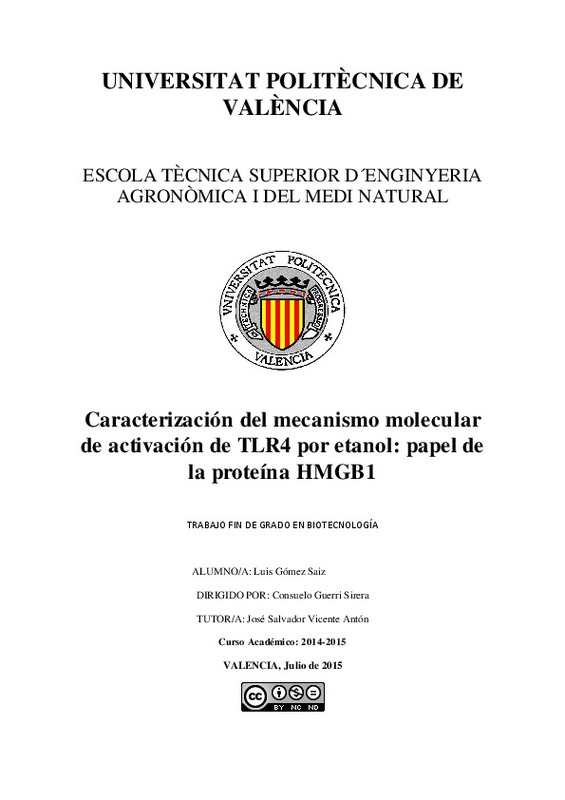JavaScript is disabled for your browser. Some features of this site may not work without it.
Buscar en RiuNet
Listar
Mi cuenta
Estadísticas
Ayuda RiuNet
Admin. UPV
Caracterización del mecanismo molecular de activación de TLR4 por etanol: papel de la proteína HMGB1
Mostrar el registro completo del ítem
Gomez Saiz, L. (2015). Caracterización del mecanismo molecular de activación de TLR4 por etanol: papel de la proteína HMGB1. http://hdl.handle.net/10251/54383.
Por favor, use este identificador para citar o enlazar este ítem: http://hdl.handle.net/10251/54383
Ficheros en el ítem
Metadatos del ítem
| Título: | Caracterización del mecanismo molecular de activación de TLR4 por etanol: papel de la proteína HMGB1 | |||
| Autor: | Gómez Sáiz, Luis | |||
| Director(es): | Guerri Sirera, Consuelo | |||
| Entidad UPV: |
|
|||
| Fecha acto/lectura: |
|
|||
| Resumen: |
[ES] Resultados recientes del laboratorio de Patología Celular del CIPF demuestran que el etanol, a concentraciones con relevancia fisiológica de etanol (10-50 mM), es capaz de activar la señalización y respuesta del ...[+]
[EN] Recent results from the CIPF Cellular Pathology Laboratory demonstrate that ethanol,
at physiologically relevant concentrations of ethanol (10-50 mM), is able to activate the
response and signaling of the innate ...[+]
|
|||
| Palabras clave: |
|
|||
| Derechos de uso: | Reconocimiento - No comercial - Sin obra derivada (by-nc-nd) | |||
| Editorial: |
|
|||
| Titulación: |
|
|||
| Tipo: |
|
recommendations
Este ítem aparece en la(s) siguiente(s) colección(ones)
-
ETSIAMN - Trabajos académicos [3555]
Escuela Técnica Superior de Ingeniería Agronómica y del Medio Natural







